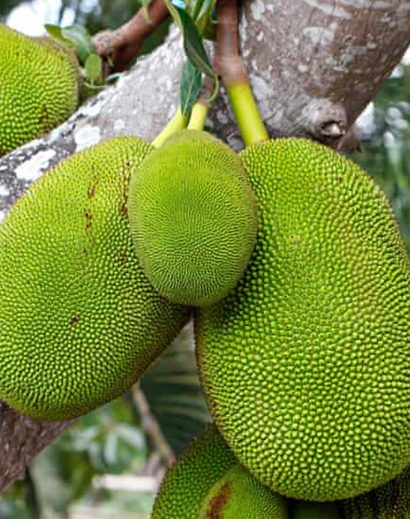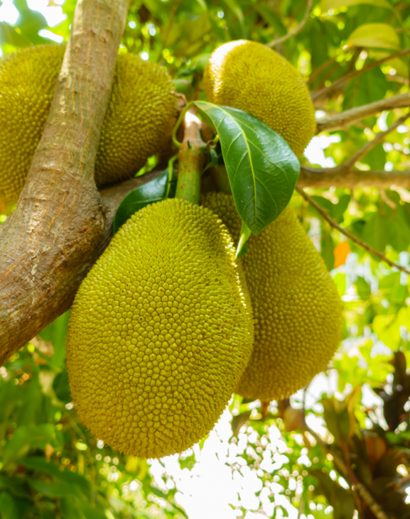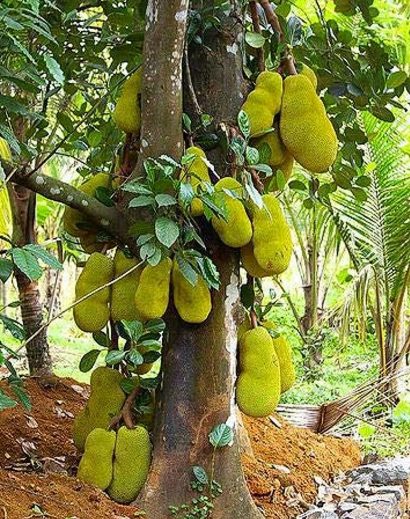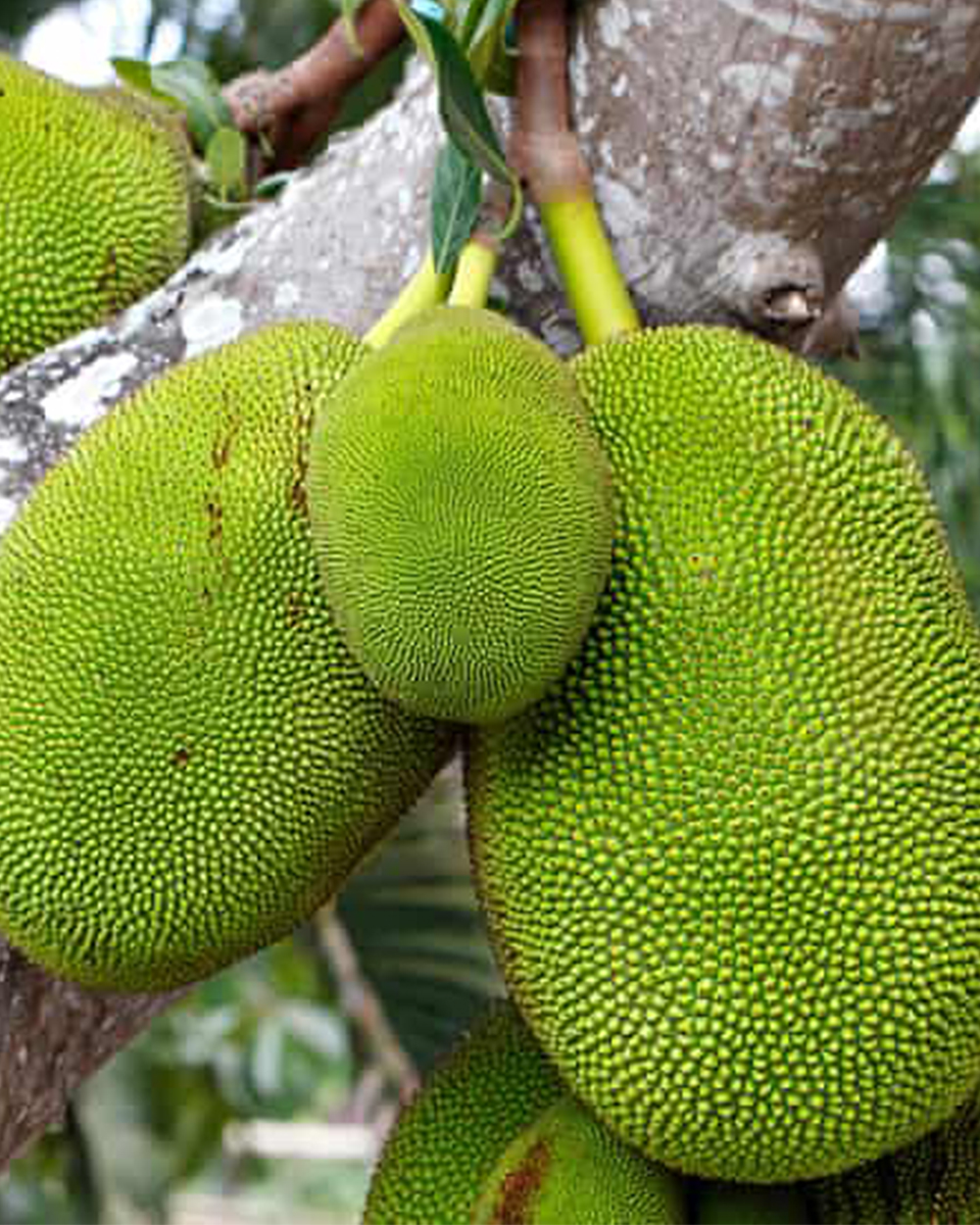| Best Planting Time |
The best time to plant jackfruit trees depends on your climate and weather conditions. Jackfruit trees thrive in tropical and subtropical regions where they can grow year-round without the threat of frost. Here are some general guidelines for when to plant jackfruit trees:
Spring or Early Summer: In tropical regions, where there is no distinct winter, you can plant jackfruit trees almost any time of the year. However, it's often recommended to plant them in the spring or early summer when the weather is warm and there is ample moisture. This allows the tree to establish its roots before the dry season arrives.
After the Last Frost: In subtropical regions with occasional frost, it's best to plant jackfruit trees after the last frost of the winter. This is usually in the spring, when the risk of frost damage has passed.
Rainy Season: Jackfruit trees benefit from regular watering, especially during their early growth stages. If you're in an area with distinct wet and dry seasons, consider planting your jackfruit tree at the beginning of the rainy season. This will help the tree establish itself with access to adequate moisture.
Year-Round Planting in Tropical Climates: In truly tropical climates where there is no significant temperature variation, you can plant jackfruit trees throughout the year as long as there is sufficient rainfall or irrigation.
When planting jackfruit trees, it's essential to choose a well-draining location with full sun exposure. Proper care, including regular watering and fertilization, is crucial to the tree's successful establishment and growth. Additionally, consider the space requirements of mature jackfruit trees, as they can become quite large and need ample room to spread their branches.
|
| Marturity |
Jackfruit (Artocarpus heterophyllus) is a tropical fruit tree that typically takes several years to start producing its first fruits after planting. The exact time it takes can vary depending on various factors, including the growing conditions, climate, and the specific variety of jackfruit. However, here is a general timeline for jackfruit fruit production:
Seedling Stage: When you plant a jackfruit seed or seedling, it will go through a juvenile phase during which it primarily focuses on vegetative growth, such as developing leaves, stems, and roots. This stage can last for 2 to 4 years or even longer, depending on the conditions.
Transition to Reproductive Stage: Jackfruit trees generally start transitioning to the reproductive phase when they reach a certain size and maturity. This usually occurs when the tree is around 3 to 5 years old.
Flowering and Fruit Production: Once the jackfruit tree has reached the reproductive stage, it will begin to produce flowers. After successful pollination, fruit development begins. It can take several months for the fruit to grow and mature.
First Fruits: In most cases, you can expect your jackfruit tree to produce its first fruits around 3 to 8 years after planting. However, some jackfruit trees may take longer, especially if they have been grown from seeds rather than grafted or cloned from a mature tree.
Overall, patience is key when growing jackfruit trees, as they are known for their slow growth and can take several years to start bearing fruit. Once they start producing, they can continue to bear fruit for many years, providing a valuable source of food.
|
| Size Of The Hole |
The size of a hole for a Jack fruit tree when planting should be 60cm (length) by 60cm (width) by 60cm (height).
Prepare the soil by adding organic matter and ensuring good drainage before planting.
|
| Spacing |
When planning spacing, also consider the mature size of the trees. Jack Fruit trees can become quite large, so providing enough room for their eventual size is important. The ideal spacing for Jack Fruit trees is 10m between rows and 10m within the row, this is to ensure that you cater for good air circulation and leave room for growth of the plant. Note that Jack Fruit trees thrive in full sunlight, so choose a location that receives at least 6-8 hours of direct sunlight per day.
|
| Irrigation |
The best irrigation program for Jack Fruit trees, depends on several factors including your local climate, soil type, and the age and size of the trees.
Establish a Watering Schedule:
Young trees (1-3 years old): Initially, young trees need frequent, shallow watering to encourage root development. Water them at least 3 times a week during all seasons. Gradually reduce the frequency as the tree matures.
Mature trees (4+ years old): Mature treeas require less frequent but deeper watering. Water deeply to saturate the root zone at least twice a week.
Deep Watering:
When irrigating, apply water slowly and deeply to encourage deep root growth. This helps the tree access water stored deeper in the soil, making it more resilient to drought.
Mulching:
Apply a layer of organic mulch, such as wood chips or compost, around the base of the tree to help conserve soil moisture, regulate soil temperature, and reduce weed competition.
Micro-jet irrigation is an excellent choice for fruit trees because they deliver water directly to the root zone.
Water atleast 3 times a week.
The best time to water is in the early hours of the morning before sunrise and in the evenings when the rate of evaporation is very low. You may choose either time for you to water your trees.
|
| Fertilization |
Organic fertilization for Fruit trees involves using natural and sustainable materials to provide essential nutrients to the plants. Here are some organic fertilization methods and tips for growing healthy trees:
Organic Liquid Fertilizers: You can make organic liquid fertilizers by steeping comfrey/ tithonia or compost or rotten manure or other organic materials in water. Use the strained liquid as a foliar spray or soil drench to provide nutrients to your fruit tree. Apply liquid fertilizer every after 2 weeks.
Compost: Compost is a valuable organic fertilizer that improves soil structure and provides a wide range of nutrients. You can make compost from kitchen scraps, yard waste, and other organic materials. Apply a layer of compost around the base of the fruit tree every 2 months.
Well-Rotted Manure: Well-rotted manure from animals like cows, goats, horses, or chickens is rich in nutrients and can be used as an organic fertilizer. Apply it as a top dressing around the fruit tree, avoiding direct contact with the stem to prevent the plant from rotting. Apply this every 2 months.
Organic Mulch: Organic mulch, such as straw, leaves, or wood chips, can help retain soil moisture and suppress weeds. Apply a layer of mulch around the base of the fruit tree to conserve moisture and provide slow-release of nutrients as it breaks down. Replenish whenever the mulch reduces.
Worm Castings: Worm castings, also known as vermicompost, are rich in nutrients and beneficial microorganisms. Incorporate worm castings into the soil or use them as a top dressing for the fruit tree. Apply every 2 months.
|
| Common Diseases |
Jackfruit trees (Artocarpus heterophyllus) can be susceptible to various diseases, which can affect their growth and fruit production. Common diseases that can affect jackfruit trees include:
Jackfruit Rust (Phakopsora jacksonii): This fungal disease is a common issue for jackfruit trees. It appears as orange or reddish-brown powdery spots on the leaves, which can eventually lead to defoliation and reduced fruit production.
Leaf Blight (Glomerella cingulata): Leaf blight is another fungal disease that affects jackfruit trees. It causes brown to black irregular spots on the leaves and can lead to leaf drop in severe cases.
Fruit Rot (Phomopsis sp.): This fungal disease affects the fruit of the jackfruit tree, causing dark, sunken lesions on the fruit's surface. It can lead to fruit drop and reduced yield.
Anthracnose (Colletotrichum gloeosporioides): Anthracnose can affect both leaves and fruit. It appears as small, sunken, dark spots on the leaves and can cause fruit rot, rendering the fruit inedible.
Powdery Mildew (Oidium spp.): Powdery mildew is a fungal disease that appears as a white powdery substance on the leaves, stems, and fruit surfaces. It can hinder photosynthesis and reduce fruit quality.
Phytophthora Root Rot (Phytophthora spp.): This is a soil-borne pathogen that causes root rot in jackfruit trees. Infected trees may exhibit wilting, yellowing of leaves, and poor growth. It can be particularly damaging in poorly drained soils.
Bacterial Wilt (Ralstonia solanacearum): Bacterial wilt is a severe disease that can lead to the sudden wilting and death of jackfruit trees. It is challenging to control once established in the soil.
Black Root Rot (Thielaviopsis paradoxa): This fungal disease affects the roots of jackfruit trees, causing blackened and rotted root tissue. Infected trees may show stunted growth and leaf yellowing.
To manage and prevent these diseases in jackfruit trees, it's important to follow good cultural practices, such as providing proper spacing between trees for air circulation, regular pruning to remove infected plant material, and maintaining good soil drainage.
|
| Disease and Pest control |
Controlling diseases and pests in jackfruit using organic methods is important for sustainable and chemical-free cultivation. Here are some organic methods to manage jackfruit diseases and pests:
Pruning and Thinning:
Regularly prune the jackfruit tree to remove dead or diseased branches. This helps improve air circulation and sunlight penetration, reducing the risk of diseases. Thin out excessive growth to maintain a well-ventilated canopy.
Sanitation:
Remove fallen leaves, fruits, and debris from around the tree to reduce disease sources and pest habitats.
Properly dispose of infected or infested plant material to prevent the spread of diseases and pests.
Neem Oil:
Neem oil is a natural insecticide and fungicide. Dilute neem oil with water and spray it on the tree to control various pests and fungal diseases.
Garlic and Chili Pepper Spray:
Create a homemade spray by blending garlic and chili peppers with water. Strain the mixture and use it to deter pests like aphids and mealybugs.
Neem tea:
Create a home made spray by boiling neem leaves with water. Strain the mixture and use it to deter and destroy a wide range of pests and fungal infections.
Aloe Vera liquid:
Create a home made spray by getting 5 to 10 leaves of Aloe vera, then chop them into tiny pieces to expose the gelly to mix with water. After 2 hours strain the mixture and use it to deter and destroy a wide range of pests and fungal infections.
Liquid soap and cooking oil spray:
Create a home made spray by mixing equal quantities of cooking oil and liquid soap (any brand of your choice), then shake the mixture until it looks yorgurt like and later get 50ml of the mixture and add to a 16L knapsack sprayer. Mix with water and use the mixture to deter and destroy any tyrpe of pests. Spray daily until the pests are gone.
Companion Planting:
Plant companion crops like marigolds, lavender, basil, and mint around the jackfruit tree to deter pests with their strong odors.
Beneficial Insects:
Encourage the presence of beneficial insects like ladybugs and lacewings that prey on common jackfruit pests.
Organic Mulching:
Apply organic mulch around the base of the tree to conserve moisture, suppress weeds, and improve soil health.
Remember that organic pest and disease control methods may require patience and consistent application. Combining multiple strategies and maintaining overall plant health is key to successfully managing jackfruit diseases and pests organically.
|





Reviews
There are no reviews yet.